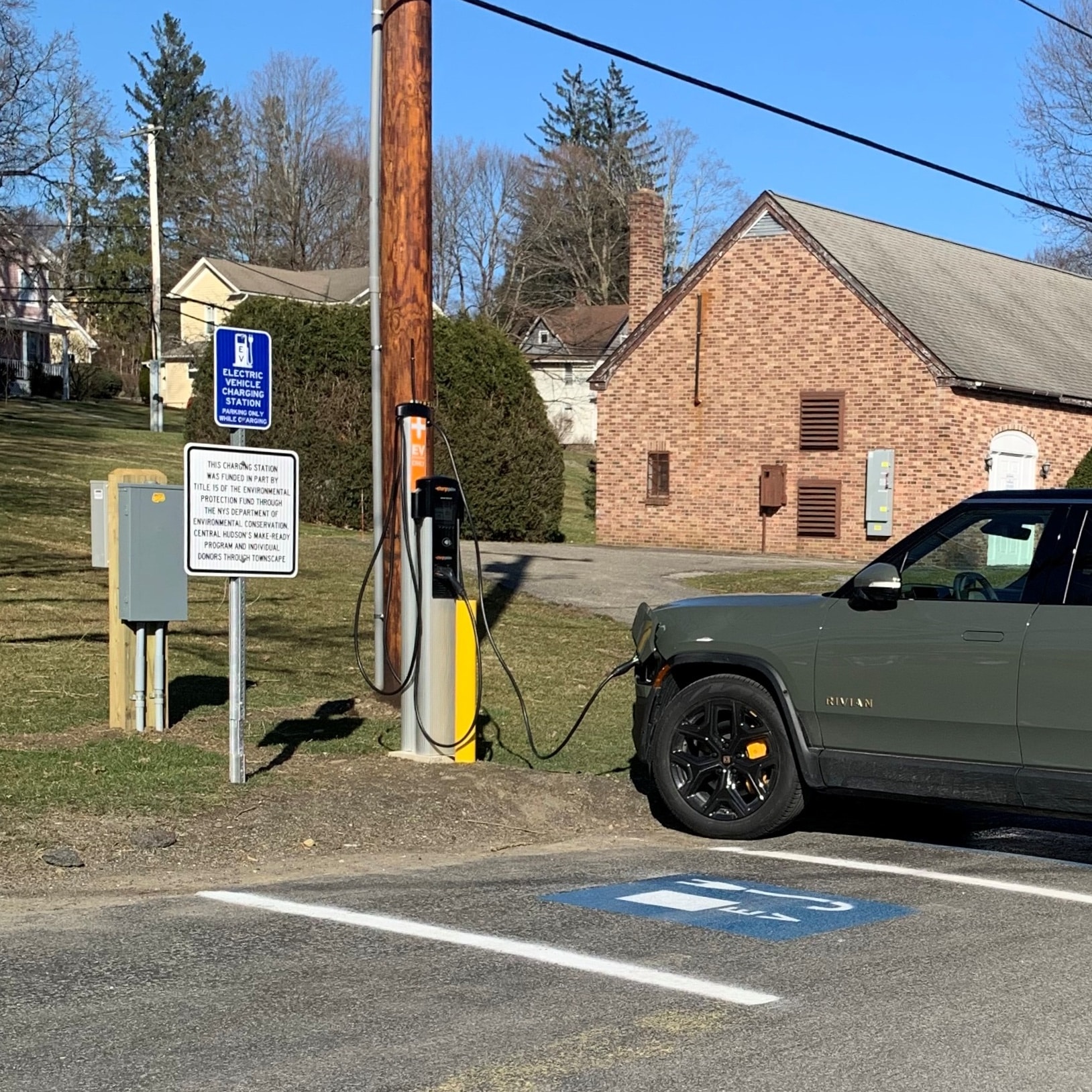ELECTRIC VEHICLE CHARGING
The First EV Wave Is Here. The Set Will Just Keep Getting Bigger.
The end of the gasoline age is upon us. We are about to enter the era of electric vehicles. Silently, with no exhaust. It’s about time.
This is not science fiction. For consumers, the transition will be smooth with a few, small inconveniences—and many more benefits than drawbacks. Yet looking back 25 years from now, it will seem as culturally transformative as the rise of the personal computer and cellphone.
So what should one expect with an electric car? Is it that much different than owning a gas vehicle?
Obviously, the main difference is that one charges the batteries instead of filling the tank with gas. (Those nutty humans, burning a highly flammable liquid all this time!) Most charging takes place at home, one of two ways. The first is to plug the car into a standard outlet. This is called “Level 1” charging. It is the slowest, providing only 3 to 5 miles of range per hour. Overnight, you’ll add 30 to 50 miles of range, which is plenty for a local errand. Completely drained, a battery pack needs well over a day of juice to get a full charge.
Or, have an electrician wire in a “Level 2” charger. It uses 240 volts, like a clothes dryer or an oven. In an hour, a Level 2 charger adds about 20 to 30 miles of range, so overnight would provide a full charge. Level 2 chargers start at around $800 before installation.
The third type, a Level 3, is commonly referred to as a “DC Fast Charger.” It can be found only at commercial charging stations and uses a 480-volt DC plug. One can expect an 80-percent charge in about 30 minutes. Not all EV’s are compatible with Level 3 charging but as more cars enter the market, most will be Level 3 ready.
Let’s say a charge is needed away from home. Now what? When you buy a new EV, you should sign up with a charging network. The dealer may do it for you. All charging stations are on networks, and accessed and controlled using a smart phone or the car’s GPS. As of a year ago there were 25,000 stations across the U.S. with with nearly 80,000 connectors among them. New York State ranked .
There are dozens of networks to choose from but most are small and, as tends to happen, will soon be eaten by bigger fish. The largest network is Chargepoint, headquartered in California. Its pricing is unusual: Chargepoint allows the property owner where the charger is located to set rates. At this early stage, many of its stations are free, with the owner (a retailer, for example) absorbing the cost. Registration is free and charging can be enabled via a ChargePoint card, the company’s smartphone app, or a tap to charge-enabled phone. The first time a member uses a fee station, the company charges $10 as a balance and deducts the cost from it. Every time the balance goes below $5 another $10 is charged.
Blink is another large network. You don’t need to be a member to use a Blink charger, but if you do it could save money depending on your membership. The basic cost for Blink Level 2 charging ranges from $0.39 to $0.79 per kWh or $0.04 to $0.06 per minute. It’s $0.49 to $0.69 per kWh for Level 3 fast charging or from $6.99 to $9.99 per session.
Electrify America is owned by Volkswagen and was established as part of the settlement over its diesel emissions fraud. Membership is not required, though joining the company’s Pass+ plan triggers a discount. Charging costs are based on location and the car’s maximum power level. For example, in California the basic cost is $0.99 per minute for a 350-kilowatt power capacity, $0.69 for 125 kilowatts, and $0.25 for 75 kilowatts. The Pass+ plan has a small monthly fee. A $0.40 per minute idle fee is applied if the vehicle remains connected to the charger 10 minutes or more after a session has ended.
Based in Tennessee, EVgo maintains more than 1,200 DC fast chargers in 34 states. No subscription is required, though signing up affords discounted Level 3 charging. Sessions are limited to 45 minutes for pay-as-you-go sessions, with members able to go for up to 60 minutes between 8 pm and 6 am. Rates for fast charging vary by region. Signing up requires a $7.99 monthly fee, but includes 34 minutes of fast charging. Level 2 charging is $1.50 per hour either way.
That gives one an idea on how the charging process works. More information here.
What is it like to own an electric car? I asked an EV-owning friend. She started by saying that she’s never been happier and would never go back to a gasoline car. “Range anxiety?” “Yes,” she said, “Once. On my first drive home from the dealership because I had no idea what to expect. I haven’t had it since.” She has driven to Cape Cod and Kennebunkport and Portland, Maine without a charge in route. She did say that range in winter decreases maybe 12 miles on a full charge. And she does need to plan ahead a little, she explained. Although I admire and respect her dearly, she is a horrible planner. If she can do it, it can’t be much trouble.
She said she’d like to see a charger in Millerton, and I was happy to inform her that the Climate Smart Community Task Force took on the project of acquiring pair of Level 2 EV chargers and the grant was approved. We’ll know soon when it will be installed.
Andrew Stayman

The Village of Millerton installed a 2-port Level 2 charger on Century Boulevard. Funding was provided by a NYS DEC grant, Central Hudson and individual donors.